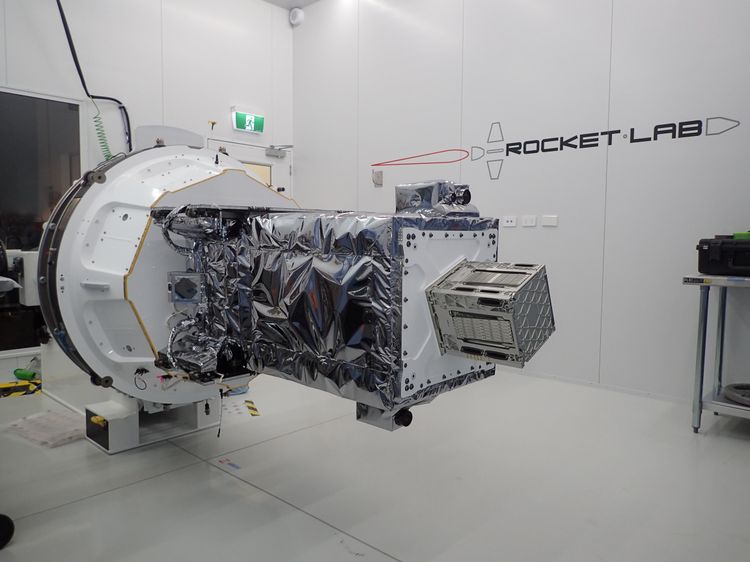How DARPA's Experimental R3D2 Satellite Was Built Super Fast

The builder for an innovative Defense Advanced Research Project Agency (DARPA) satellite says they "successfully demonstrated rapid spacecraft development" for the R3D2 mission, which launched flawlessly in late March.
Northrop Grumman completed the construction — from concept to spaceflight — in only 20 months, far shorter than the traditional timeline of years, Northrop Grumman representatives said in a statement. To reach that speed, the company said, the defense agency allowed for "greater levels of risk than is typical for an operational system," according to the statement; DARPA worked with Northrop Grumman to accept fewer requirements, reviews and deliverables during the construction than on a usual project.
"Our team's success with the R3D2 program is a strong proof of concept that the rapid development of future space capabilities is possible," Scott Stapp, the company's vice president of resiliency and rapid prototyping, said in the statement. "Taking thoughtful risks and eliminating bureaucracy allowed us to streamline our processes to achieve rapid timelines," he added.
The company plans to partner with the U.S. government, as well as companies large and small, to create fast-construction prototypes and demonstrations related to national-security missions. Northrop Grumman plans "to lead the cultural change necessary in the industry," Stapp added.
The R3D2 satellite is designed to test a new type of space antenna, DARPA officials said before launch on March 28. It includes a paper-thin "membrane reflectarray antenna" made of Kapton, which is supposed to extend as far as 7.3 feet (2.3 meters).
"R3D2 will monitor antenna deployment dynamics, survivability and radio frequency (RF) characteristics of a membrane antenna in low-Earth orbit," DARPA officials said in the statement. "The antenna could enable multiple missions that currently require large satellites, to include high data rate communications to disadvantaged users on the ground."
- Rocket Lab Launches Experimental Satellite for DARPA
- Northrop Grumman Unveils Concept for XS-1 Military Space Plane
- Classified Shuttle Missions: Secrets in Space
Follow Elizabeth Howell on Twitter @howellspace. Follow us on Twitter @Spacedotcom and on Facebook.
Breaking space news, the latest updates on rocket launches, skywatching events and more!

Elizabeth Howell (she/her), Ph.D., was a staff writer in the spaceflight channel between 2022 and 2024 specializing in Canadian space news. She was contributing writer for Space.com for 10 years from 2012 to 2024. Elizabeth's reporting includes multiple exclusives with the White House, leading world coverage about a lost-and-found space tomato on the International Space Station, witnessing five human spaceflight launches on two continents, flying parabolic, working inside a spacesuit, and participating in a simulated Mars mission. Her latest book, "Why Am I Taller?" (ECW Press, 2022) is co-written with astronaut Dave Williams.

